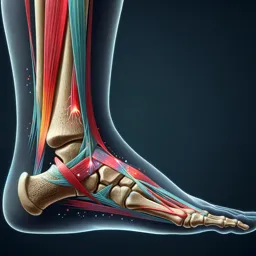Introduction
Sports injuries are an unfortunate yet common reality for athletes and active individuals. Effective rehabilitation through physiotherapy is essential to ensure a safe and successful return to physical activity. This article explores the most prevalent types of sports injuries and dives into physiotherapy-based approaches and best practices for optimal recovery.
Common Sports Injuries
- Sprains and Strains: Overstretching or tearing of ligaments (sprains) and muscles/tendons (strains).
- Knee Injuries: Includes anterior cruciate ligament (ACL) tears, meniscus injuries, and patellar tendinitis.
- Shoulder Injuries: Common issues include rotator cuff tears, dislocations, and impingements.
- Fractures: Breaks in the bone, frequently resulting from falls or direct impact.
- Tendonitis: Inflammation of the tendons, often due to overuse, as seen in tennis or golfer’s elbow.
The Role of Physiotherapy in Recovery
Physiotherapy plays a crucial role in the different stages of sports injury rehabilitation:
- Assessment: Identifying the type and extent of the injury through detailed physical exams and, where necessary, imaging.
- Pain Management: Techniques such as ice, heat, ultrasound, and electrical stimulation are used initially to control pain and inflammation.
- Restoring Mobility: Gentle stretching and range-of-motion exercises are introduced to reduce stiffness and maintain joint flexibility.
- Strengthening: Progressive loading of muscles, tendons, and joints helps rebuild strength and prevent future injuries.
- Functional and Sport-Specific Retraining: Rehabilitation programs incorporate drills that mimic the movements and demands of the athlete’s sport to ensure readiness for return to play.
Best Practices in Physiotherapy for Sports Injuries
- Early Intervention: Initiating physiotherapy as soon as possible can accelerate recovery and minimize complications.
- Individualized Treatment Plans: Each injury and athlete is unique; therefore, customized programs yield the best outcomes.
- Close Monitoring: Regular assessments allow for timely adjustments in therapy based on healing progress.
- Education and Prevention: Teaching proper warm-up, cool-down, and body mechanics helps reduce the risk of recurrent injuries.
- Multidisciplinary Collaboration: Coordination between physiotherapists, physicians, coaches, and the athlete ensures holistic care.
Conclusion
A comprehensive physiotherapy approach not only facilitates a safe return to sports but also empowers individuals to prevent re-injury. Seeking professional guidance and adhering to prescribed rehabilitation protocols are key to making a full and lasting recovery.
































